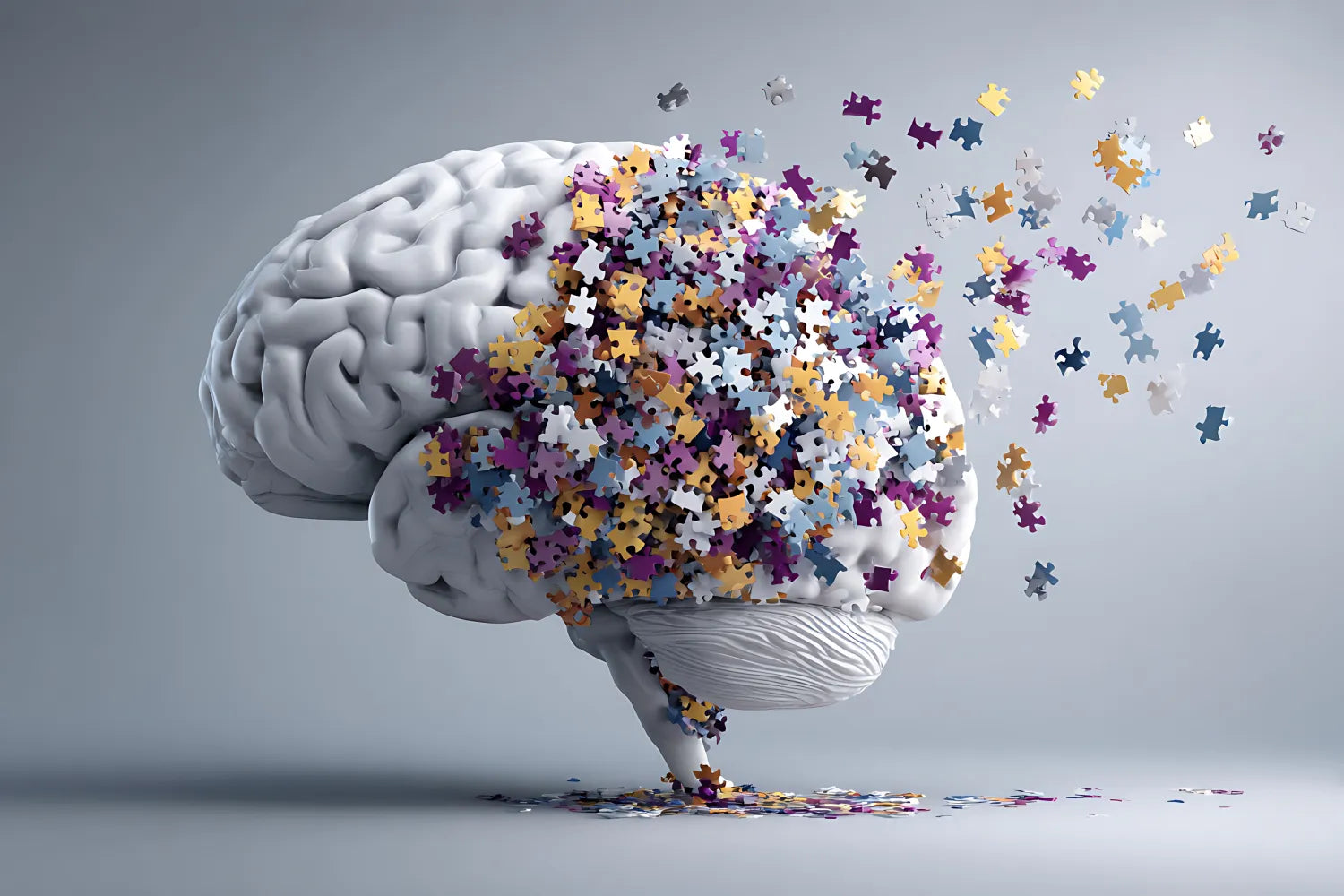
Dr. Eric Venn-Watson’s Highlights
-
The endocannabinoid system (ECS) exists to help certain functions in your body maintain homeostasis.
The ECS interacts with receptors in the hypothalamus to ensure body temperature is well-regulated.
You can stimulate the ECS by encouraging your body to produce more of its own endogenous cannabinoids — supplements like fatty15 can help.*
The human body is constantly in a state of balance. Even when you are sick, your body is actively working to eliminate the sickness, heal injuries, and reestablish homeostasis.
Body temperature is another example of how the body maintains balance — this temperature regulation is called thermoregulation.
We’ll explain what thermoregulation is, how the endocannabinoid system is involved, and what you can do to support your body’s balancing act.
What Is Thermoregulation?
When you are cold, you get chills. When you are hot, you begin to sweat. These are effects of your body attempting to recalibrate your body temperature and either warm or cool you. This is the process of thermoregulation, and it starts with receptors on the skin.
Thermoregulatory Process
Sensory receptors on your skin collect data from external stimuli. If you walk outside into the snow, your receptors gather information on the temperature and send the information to the hypothalamus, a small area of your brain that handles body temperature regulation.
Neurons in the hypothalamus receive the information from the sensory receptors and signal other parts of the body (like sweat glands) to take action to correct the change in body temperature.
Bodily Changes That Help Regulate Temperature
The body has several temperature-regulating mechanisms that it can employ to bring your temperature back within a healthy range (which is right around 98.6 degrees Fahrenheit).
- Hypothermia. When body temperature drops below 95 degrees Fahrenheit, your body enters a state of hypothermia. To bring your body temperature back up, your blood vessels may constrict, decreasing blood flow to the skin and keeping your core warm. You may also begin to shiver, which causes the muscles to involuntarily move and create heat.
- Hyperthermia. When body temperature rises over 99 to 100 degrees Fahrenheit, you are in a state of hyperthermia. Your body will attempt to lower your core body temperature by stimulating sweat glands to produce sweat and increasing blood flow to the skin.
The neurotransmitter in the hypothalamus has another system that aids in the regulation of body temperature, known as the endocannabinoid system.
What Is the Endocannabinoid System?
The endocannabinoid system, or ECS, is a system of receptors located all over the body that collect data and relay it back to a control center in your brain. These receptors help keep your body in homeostasis and work with other parts of your body, like the hypothalamus, to get the job done.
We’ve known about the endocannabinoid system for a few decades, but increased focus in the field of cannabis therapy has brought about new scientific discoveries about this system and how deeply ingrained it is in virtually every regulatory function in our bodies.
The endocannabinoid system has three parts: receptors, endocannabinoids, and enzymes.
Receptors
Two types of receptors make up the endocannabinoid system: CB1 receptors and CB2 receptors. CB1 receptors are located in your brain and spinal cord and are the most plentiful. CB2 receptors are found in the peripheral nervous system and digestive tract.
Endocannabinoids
Your body makes compounds that stimulate the receptors in the ECS. There are two that are well-researched, AEA (anandamide) and 2-AG. Only 2-AG can bind with both CB1 and CB2 receptors, making it “fully acting.”
AEA can only bind to CB1 receptors in the brain and spinal cord. Because 2-AG is fully acting, it is more useful to our bodies and more beneficial when researched for therapeutic uses.
Enzymes
The body needs enzymes to break down endocannabinoids once they have been used. These ensure the endocannabinoids are removed from the ECS and eliminated from the body. Fatty acid hydrolase breaks down anandamide, while monoacylglycerol acid lipase breaks down 2-AG.
A Note About Cannabinoids
A note about cannabinoids: while we produce our own cannabinoids internally (called endocannabinoids), there are plant-based cannabinoids called phytocannabinoids that can also interact with the receptors located in our internal endocannabinoid system. You’re probably familiar with CBD and THC, both phytocannabinoids from the cannabis sativa plant. These also affect our ECS, however our CB1 and CB2 receptors were not created to use phytocannabinoids. Rather, these receptors are best activated by our own body balancing, homeostasis inducing endocannabinoids.
ECS and Thermoregulation
If the hypothalamus regulates body temperature and the endocannabinoid system helps provide regulation, it begs the question of how the two work together.
Located on neurons in the hypothalamus are receptors that are part of the endocannabinoid system. Modulation of these receptors can help us achieve a better balance in body temperature (and other bodily functions).
These receptors work to maintain a balance between neurons in the brain. In other words, they ensure the right amount of neurotransmitters are sent and received to help ensure homeostasis, including temperature regulation.
When we introduce cannabinoids to the body, there can be a dose-dependent, temperature-lowering or raising effect. High doses can result in hypothermia (less heat), while low doses can result in hyperthermia (more heat).
Research has concluded that there is a particular mechanism that the cannabinoids modulate at both the presynaptic and postsynaptic levels. This means that the ECS is working to modulate activity in both the neuron that sends the neurotransmitter and in the neuron that receives the neurotransmitter.
The main neurotransmitters involved in temperature regulation in the hypothalamus are dopamine and GABA, and opioid peptides. CB1 receptors located at the synapses interact with these neurotransmitters to regulate or change body temperature.
Although some cannabinoids have an impact on thermoregulation (like THC), our bodies’ own endocannabinoids do a great job regulating temperature and ensuring we maintain homeostasis instead of heating up too much or cooling down too low.
It may seem like a difficult job since for one fully-acting endocannabinoid, but recently another important fully-acting endocannabinoid was discovered..
Introducing Pentadecanoylcarnitine
Pentadecanoylcarinite, or “PDC” for short, is the second-ever to be discovered, fully-acting endocannabinoid. This means that in addition to 2-AG, there’s now another endogenous cannabinoid our bodies can make, as long as we have the right fatty acid to synthesize it.
PDC is synthesized from pentadecanoic acid, or “C15:0.” This is an odd-chain, saturated fatty acid that science supports as being an essential fatty acid, which means our bodies must have it to maintain our health and wellness, but cannot readily make it on their own. That means it has to come from a dietary or supplemental source.
What C15:0 Does
C15:0 is the gatekeeper of PDC, allowing your body to produce another fully-acting endocannabinoid and supporting better bodily regulation and function. However, it’s got some other impressive benefits:*
- Cell membrane support. The basis of your health begins in your cells. When your cells are well, your body functions better. Cells wear out as they age and become flimsy and weak. C15:0 integrates into cell membranes to strengthen and fortify them, so they stay strong and protected.
- Mitochondrial boost. The batteries in our cells lose strength as we age, leaving our cells performing poorly and resulting in systems and bodies that feel tired or sluggish. C15:0 increases mitochondrial function by up to 45 percent, recharging our cells’ batteries and helping us feel more energetic.
- Improved cellular signaling. In addition to benefiting the endocannabinoid system, C15:0 also improves cellular signaling by naturally binding to special receptors located all over the body called PPARs. These receptors are also vital to functions like mood, memory, sleep, and hunger. By binding to these receptors, C15:0 helps bring balance to these functions.
Further, higher levels of C15:0 has been repeatedly associated with improved metabolic, immune, liver and heart health. Moreover, studies support that C15:0 is better and safer for our cells than the purest, highest performing omega-3..*
Elevate your cells. Elevate your self.
Buy NowWhere To Find C15:0
C15:0 is found primarily in full fat dairy products. However, simply increasing your intake of whole fat dairy may not be the ideal solution for increasing our C15:0 levels, because you’d end up eating extra calories and expose yourself to the bad, even-chain, pro-inflammatory saturated fatty acids. A solution? Fatty15.
Fatty15 is the breakthrough supplement, born of scientific research, containing only one ingredient: the pure, vegan-friendly, sustainably-produced, award-winning, version of C15:0 known as FA15™. This once-a-day supplement contains just 100 mg of FA15™, which has been shown to increase your circulating levels of this essential fatty acid and provide your body with the building blocks to produce PDC.
Heat Things Up With Fatty15
Think of it. More balanced body temperature, a better mood, rest that is actually restful, better appetite control, and healthier glucose metabolism and cholesterol homeostasis.*
Fatty15 is the perfect addition to your health stack and the smart way to focus on your health — learn more about this breakthrough essential fatty acid here, or get started with the fatty15 trial kit here.
Sources:
The role of endocannabinoids in the hypothalamic regulation of visceral function|Pages.UCSD.edu
Hypothermia - Symptoms and causes - Mayo Clinic
Hyperthermia: Symptoms, Causes, Treatment and Recovery|My Cleveland Clinic.org

Eric Venn-Watson M.D.
CEO, Co-Founder
Senior Scientist, Co-Founder
Eric is a physician, U.S. Navy veteran, and Co-founder and COO of Seraphina Therapeutics. Eric served over 25 years as a Navy and Marine Corps physician, working with the special forces community to improve their health and fitness. Seraphina Therapeutics is a health and wellness company dedicated to advancing global health through the discovery of essential fatty acids and micronutrient therapeutics.
You May Also Like...
When Does Cognitive Decline Start?
Almost everyone will experience some cognitive decline in their lifetime. Learn which decade is most closely associated with thinking trouble.
List of Cognitive Changes in the Elderly as They Age
Are you wondering where your keys are? Not being able to find them could be due to cognitive changes in your brain as you age.


